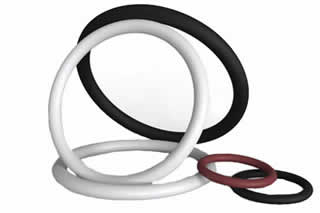
O-rings are one of the most common types of mechanical seals. Consisting of a ring-shaped piece of elastomeric material, they are placed around the mating surfaces of two parts. O-rings are designed to prevent leaks from around these mating surfaces. There are instances, however, in which O-rings can fail.
#1) Wrong Size
There’s no such thing as a one-size-fits-all O-ring. While they are all ring-shaped, O-rings are available in different sizes. O-rings have an inner diameter size and a thickness size. The inner diameter of an O-ring must accommodate the parts with which it’s used. If the inner diameter is too big, the O-ring will fit loosely over the parts. As a result, pressurized gases or liquids traveling through the parts may leak through the O-ring.
#2) Improper Installation
O-rings that are installed improperly may fail. Parts often have a groove around their mating surface. This groove acts as a seat for an O-ring. When installing O-rings, you should check for a groove. Positioning the O-ring into the groove will create a stronger seal that’s better protected against failure. If the O-ring is out of the groove, on the other hand, it may fail.
#3) Excessive Pressure
Exposure to excessive pressure may cause O-rings to fail. With their elastomeric construction, O-rings can withstand pressure. They’ll expand under pressure, and after the pressure has been removed, they’ll revert back to their original size. O-rings, though, can fail when exposed to excessive pressure.
#4) Expansion Rupture
Another reason O-rings can fail is expansion rupture. Expansion rupture is a phenomenon that involves trapped gas or air. Pressurized gar or air may build up underneath an O-ring. As the pressure increases, it may reach a point where it ruptures. The O-ring may essentially burst from this trapped, pressurized gas or air. Known as expansion rupture, it can cause O-rings to fail.
#5) Chemical Degradation
Chemical degradation can cause O-rings to fail. Different types of O-rings are made of different materials. They are typically all made of an elastomeric material, which allows them to withstand a certain amount of pressure. But there are dozens of types of elastomeric materials, some of which may degrade when exposed to various chemicals.
In Conclusion
O-rings can fail in different ways. Some of the most common reasons for failure include the wrong size, improper installation, excessive pressure, expansion rupture and chemical degradation. When shopping for O-rings, choose the right type to minimize the risk of failure.
